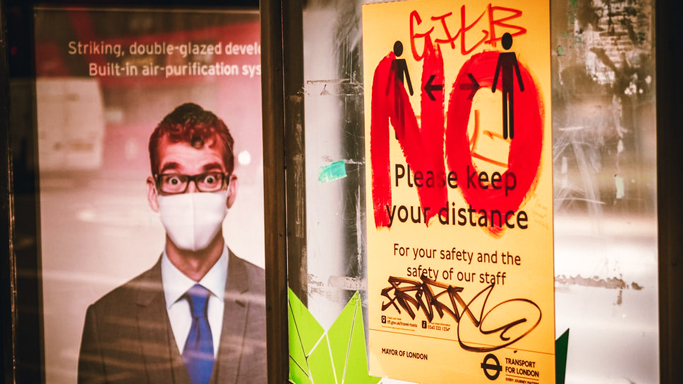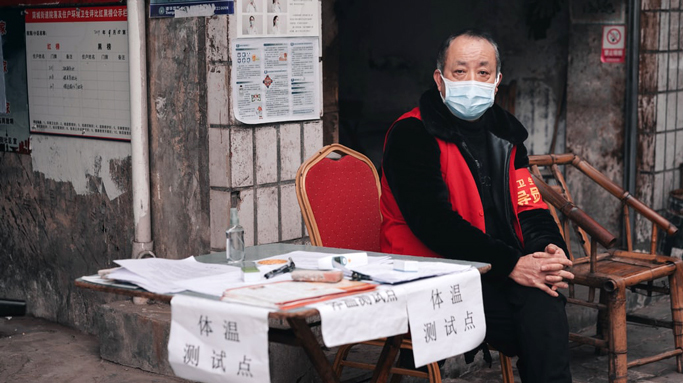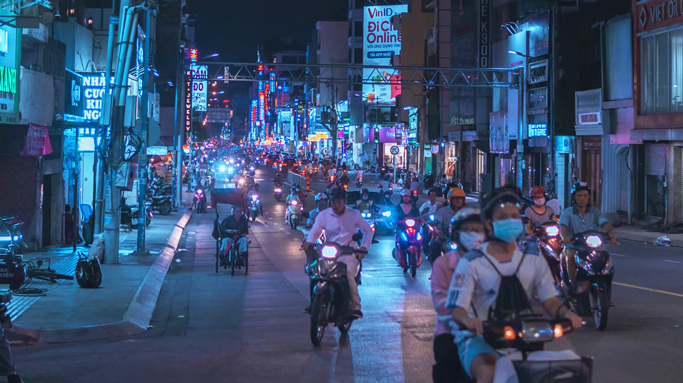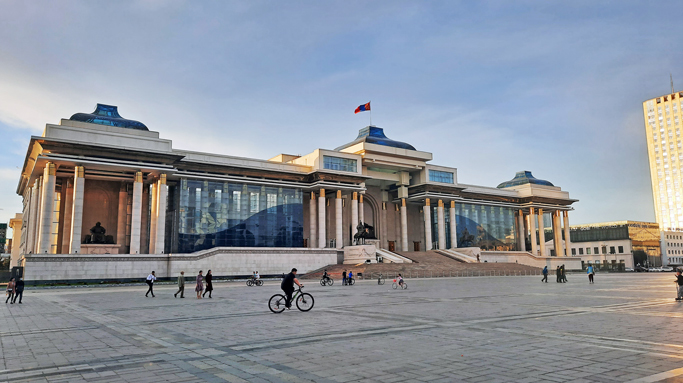Newsletters Trips@Asia
East Asia wins over COVID-19
Is it time for the West to act humble and learn a lesson or two from the developing Asian nations?
China announced on January 23rd strict travel restrictions for Wuhan, the most populous city in central China, in a bid to prevent the spread of the coronavirus. As the residents were given only eight hours to react to the news, people had little time to buy food, medicine, or essentials. All roads in and out of the city were sealed, public transportation was shut down, and private vehicles were banned. The authorities soon decided to restrict people to their homes, and the People’s Liberation Army marched in to impose the restrictions. Prior to Wuhan lockdown, such quarantine measures had never been tried on an enormous scale in the modern world. Other countries that were hit hard by the coronavirus pandemic later took the international community criticized Beijing’s disregard for civil liberties.

As we know now, regardless of the various measures each nation took to respond, the coronavirus had eventually circulated to nearly every country on the globe. But when it comes to COVID-19 fatalities, the statistics show a striking disparity between much of Asia, where the total number of deaths per million inhabitants is regularly below ten, and the West, where the numbers are in the hundreds. For instance, China has reported three deaths per million inhabitants, South Korea, Singapore, and Indonesia five, and Japan seven. On the other hand, Germany has had 100 deaths per million inhabitants, the US almost 400, Britain, Italy, and Spain more than 500, and Belgium now has over 800. Is it time for the West to act humble and learn a lesson or two from the developing Asian nations?

To understand what accounts for these massive differences, we shall look at the approach that some Asian countries had taken to counter the pandemic.
China
Despite being the country where the virus has first emerged, China gradually submerges into a regular post-pandemic routine. During the National Holiday, taking place annually between October 1st and 7th, China saw more than 630 million domestic trips that generated more than USD 69 billion in revenue. As of October, China has recorded 85,747 coronavirus cases and 4,634 deaths. Meanwhile, the UK has seen five times as many infections and almost ten times as many deaths, despite having a 20 times smaller population than China. It has been suggested that Beijing’s public health actions between January 29th and February 29th may have prevented 1.4 million infections and 56,000 deaths.

To tackle the pandemic, China instituted methods that would have never been available to a democracy. The government implemented lockdowns of various degrees of rigor in cities and regions across the country, resulting in about 760 million people being subject to restrictions. Every time an area showed a spike in cases, a lockdown followed. The lockdowns were meticulously enforced by the state security system, any opposition was shut down, communication was censored, and only official statistics were published. Containment was assisted by mandatory mask-wearing both indoors and outdoors and public hygiene regulations, strictly policed by authorities. Drones equipped with echoing loudspeakers rebuked citizens who were not following the rules. People not following the protocols of stay-at-home or mask-wearing were threatened with severe penalties. China‚Äôs capability to track and test cases across the country whenever there is the suggestion of a new cluster of infections has immensely helped to bring local epidemics under control. The contact tracers, a group of five to seven individuals, headed by a public health official, went from street to street to take away those who seemed sick and to quarantine them by force. A sophisticated color-sorted ‚Äúhealth code‚ÄĚ system to track people‚Äôs movements was developed by tech engineers. A green bill of health and corresponding QR code is required to enter many businesses and even residential complexes, ensuring that everyone has adopted the measure, making tracing in the instance of an outbreak easier. These measures have allowed regional governments to lock down a specific area or conduct mass testing where necessary. In one example, the entire population of a city of well over nine million citizens was tested within a week.

China’s economic capability also contributed a great deal to the termination of the pandemic. As Wuhan’s outbreak peaked, with thousands of new infections per day, the city quickly opened three rapid-response shelter hospitals on February 5th. Another thirteen appeared over the next few weeks. The hospitals were established within public venues such as stadiums and exhibition centers and were used to isolate patients with mild-to-moderate symptoms of COVID-19. Patients who started to show signs of severe disease were quickly transferred to traditional hospitals. The rapid-response hospitals, holding 13,000 beds, helped isolate COVID-19 patients away from home, reducing the risk of in-family transmissions. As the world’s largest manufacturer of personal protective equipment, China was also able to ramp up the production of clinical gowns and surgical masks. Consequently, unlike most other countries, its medical workers barely suffered from a lack of protective equipment.
South Korea
South Korea adapted to the pandemic better than any other developed country due to its two-pronged strategy of fighting the virus while keeping the economy running. The country’s economy is expected to decline by just 0.8% this year, while other OECD countries see a GDP contraction of 7.6% on average. Koreans were initially hit with the largest COVID-19 outbreak outside of China in February after a significant cluster linked to a megachurch in the city of Daegu emerged. Yet, they halted a massive outbreak without closing its borders, locking down cities, or completely restricting civilian movement.

The key to South Korea’s success came from blending its technology with testing. The government mainly used its contact tracing technology to curtail the pandemic. Visitors to the country are asked to report their symptoms daily via a smartphone app. Infected patients are tracked via their credit card transactions and smartphone usage, and their whereabouts are published online daily. If infections occur in their area, the residents receive text alerts. The government also fast-tracked approval of domestic testing kits as soon as cases began hitting. Since the outbreak of the pandemic, free rapid testing is organized on a massive scale. Anyone can request a test if they have a running fever. The drive-through test takes barely 10 minutes, and the result arrives the next day via a text message. Every confirmed patient, even those with no or mild symptoms, gets isolated in hospitals or transferred to dormitories run by the government. All treatments are free, even for foreign nationals. Additionally, health officials are frequently warning the citizens concerning looming catastrophe at twice-a-day briefings, asking the public to wear masks and practice social distancing. South Koreans took the advice and adjusted their social behavior accordingly.

Since its first case, South Korea had reported 25,275 cases and around 440 deaths. A total of 23,368 people had been recovered. Authorities relaxed most of the social distancing measures on October 12th, when new case numbers had dropped below 100 per day since a resurgence in mid-August. South Korea’s major airlines have started their international flights from June, starting with countries that have not imposed entry bans but only quarantine measures. The government is currently planning to run flights to other countries by keeping a strict 14-day quarantine rule in place.
Taiwan
Taiwan, an island nation with approximately 23 million people, has reported only around 500 confirmed cases and just 7 deaths since the beginning of the pandemic. There has been only one suspected case linked to local transmission in Taipei since mid-April.

The main reason behind its success in containing the virus is a rapid and resilient response. The island’s leaders quickly acted after rumors spread online of an unidentified virus in Wuhan’s city and unconfirmed reports of patients having to isolate. Taiwan activated its Central Epidemic Command Center to coordinate different ministries in case of a national emergency. The military was brought in to boost mask and personal protective equipment production. Since December 31st of 2019, long before Beijing publicly acknowledged the outbreak’s gravity, health officials began screening passengers arriving from Wuhan. On January 20th, after China announced that the virus was human-to-human transmissible, Taiwan’s Center for Disease Control sent two experts to Wuhan in hopes of obtaining comprehensive data on new pneumonia. One day later, Taiwan confirmed its first reported case of the novel coronavirus. Wuhan residents were immediately banned from entering the island while all passengers from China, Hong Kong, and Macau were screened. By March, Taiwan banned entry for all foreign nationals, apart from diplomats and those with resident or special entry visas. The public genuinely supported the government’s approach towards the epidemic. Masks were worn, hands were washed, and quarantines respected.

Currently, everyday life on the island is rather normal compared to most other places around the globe. The country started looking at potential travel corridors or travel bubbles between countries that have handled the pandemic well. Taiwan also introduced a shorter quarantine period for business visitors in June from countries it considers low or medium risk. This requires visitors to undergo a pre-boarding test to prove they are negative within 72 hours of flying, then a test on day five of quarantine, after which they are permitted to leave isolation on the condition of self-monitoring for the next two weeks.
Vietnam
Vietnam‚Äôs tactic against the pandemic was a well-organized one. The country‚Äôs socialist government mapped out a plan of action against a possible outbreak in early January. At this point, the coronavirus was reported to have killed only two people in Wuhan. The emergency plan was put in action on January 23rd after Vietnam confirmed its first case ‚Äď a Chinese national who came from Wuhan to visit his son in Ho Chi Minh City.

Schools were closed and remained so until mid-May. Flights to and from Wuhan were canceled. The government began to inform the public on symptoms, prevention methods, and testing sites via state media outlets, social media, text messages, and famously ‚ÄĒ a viral song about the importance of handwashing. In mid-March, the country closed its border with China and increased health checks at the border. Face masks became mandatory for all people when staying outdoors. There was little resistance towards mask-wearing as the public comprehended the risks of infection. A strict nationwide lockdown was enforced from April 1st to 22nd, along with a vast and labor-intensive contact tracing operation. Hundreds of infected individuals, even those suspected, were quarantined at hospitals, state-run facilities, or at home. Anyone entering the country was quarantined for 14 days. Costs were mostly covered by the government. Everyone in quarantine was tested, even those with no symptoms. As a result, case numbers remained low.
In July, Vietnam saw a resurgence of COVID-19 cases in the coastal city of Da Nang. Cases soon grew to more than 550, around half of Vietnam‚Äôs total cases since the beginning of the outbreak. The first coronavirus death occurred on July 31st when a 70-year-old man succumbed to the virus. The city was completely locked down, and all international flights to Vietnam were suspended. The ‚Äėinfection map of Da Nang‚Äô was created to help the locals avoid hotspots and find the nearest medical facility. Robots have been designed by tech-students to carry out the task of disinfecting hospitals and public places. Wuhan‚Äôs large-scale community testing, pool sampling, was used, whereby the samples of five or six people are tested together. If there is a positive result, all samples are individually tested. Whole households went into one test. In that way, they were able to test 100,000 people through only 20,000 tests, saving time and money.

The strict measures that were undertaken helped to contain the further spread of the disease. The situation in Da Nang is now under control. Since the beginning of the epidemic, Vietnam had recorded only 1,144 confirmed cases and 35 deaths so far. 1,046 patients have been recovered. The latest cases were all imported and quarantined on arrival. Currently, Vietnam is not allowing entry of foreign nationals, except for those traveling for business or diplomatic purposes.
Mongolia
Mongolia shares the world’s longest land border with China and a vast border with Russia, two countries strongly hit by COVID-19. Yet not a single person in Mongolia died from coronavirus, and no transmission has been recorded within its borders. Overall, Mongolia has had 300 confirmed cases, all imported by air and contained in government-run quarantine facilities to which people were directed upon their arrival in Mongolia. Interestingly, Mongolia’s status as the world’s most sparsely populated country does not lie behind its victory. Its success came from adopting strict preventative measures in a very rapid action. Half of Mongolia’s 3 million population live in Ulaanbaatar, a city that overtook both New Delhi and Beijing as the capital with the highest air pollution levels. Its hospitals are usually stretched far beyond capacity as pneumonia cases spike every winter. Thus, the government quickly acknowledged that its medical system would not be able to cope with even a mild spread of COVID-19.

On January 27th, Mongolia announced that it was closing all entry ports from and into China, becoming the first country to do so. On the same day, the decision was made to close kindergartens, schools, and universities. The Mongolian Lunar New Year celebrations, probably the country’s most revered annual event, were canceled, and travel between Ulaanbaatar and all other provinces was banned for a month. Various businesses were shut, including temples, monasteries, churches, bars, and saunas. Sports events and cultural activities were restricted. These steps have contributed immensely to stop mass gatherings of people. Other control measures included temperature checks for passengers entering the country, health questionnaires, and requiring face masks in public places. Suspected individuals have been tested, and random screening was done on common pneumonia patients. The first case of COVID-19 in Mongolia, and the only one to practically cross beyond quarantine lines, was a Frenchman arriving in Mongolia via Russia on March 2nd. More than 120 people that have had close contact with the patient have been tracked down and quarantined, and over 500 people with indirect contact were placed under medical observation. None of them had tested positive for the virus. The government then decided to close its border with Russia and limit incoming air traffic to only government-controlled charter flights organized to repatriate its citizens stranded abroad. Those who arrived undergo a 21-day quarantine in a government-designated facility at their own expense. In quarantine, arriving passengers are tested three times daily.

Interestingly, Mongolia has been active in supporting other countries in combating COVID-19. In late-February, the Mongolian President became the first foreign head of state to visit Chinese President Xi Jinping since the outbreak. In support of China’s fight against the virus, he announced that Mongolia would donate 30,000 sheep to its close neighbor. In May, the government approved a donation of meat worth USD 1 million to Russia. As fall arrives, Mongolia’s coronavirus lockdown is easing. Students are in the classroom. Bars, restaurants, and other businesses are back to their regular schedule. As for reopening its border, the Prime Minister stated that border restrictions may continue until a vaccine is found.
Bhutan
Despite sharing a border with China and India, the original and current hotspots of COVID-19, Bhutan had not reported a single death from the virus. The Himalayan kingdom reported a total of 332 cases of the virus. Out of them, over 300 had already recovered.

Since the early days of the pandemic, Bhutan had implemented the proven strategy of Test, Trace, and Treat plan. Anyone arriving from overseas is put in quarantine facilities designated by the government for 21 days. The government covers all quarantine-related costs. Individuals are tested upon arrival and before their release from isolation. If anyone is tested positive, all primary contacts are traced, tested, and treated accordingly. A trace app was developed to help the surveillance team find possible contacts of confirmed cases. Robust border control systems were also put in place to reduce the risk of cross-border transmissions. All frontline workers, such as border patrols and health-workers, are being routinely tested every month. 54 flu clinics were opened across the country to enhance its surveillance of active case findings for COVID-19. Every patient who visited there with flu symptoms were tested. As a country that introduced the term Gross National Happiness, Bhutan also took steps to prevent a public mental health crisis amidst the global pandemic. A National Mental Health Response Team was set up to develop advocacy materials on mental health in times of outbreak. Five mental health hotlines have been established for free counseling.

In Bhutan, the first case of the virus was detected on March 5th ‚ÄĒ a 76-year-old American tourist. Around 90 people who came directly in contact with him were promptly traced and quarantined. Bhutan then restricted entry of foreign tourists until further notice. Schools in three areas, including the capital Thimphu, were closed. Other positive cases were further detected within quarantine facilities of Bhutanese returning home from working or studying abroad, but a community transmission was effectively prevented. On August 12th, however, a truck loader working in the dry port of Phuentsholing was tested positive for COVID-19. It was found that he has contracted a virus from an Indian driver transferring goods. More cases were subsequently detected in his workplace, among his primary contacts, and in his town, confirming low-level community transmissions. The nation declared this location to be a red zone, putting the border and residents under strict surveillance. The Royal Bhutan Army began a nationwide stray-dog feeding program to ensure that dogs do not starve during the lockdown. A massive testing campaign was organized in Phuntsholing, Thimphu, and Paro, to contain the spread. 111 cases were detected in a few clusters.
From September 1st, social distancing had been gradually easing, as the virus’s spread is slowing in the border region. For now, it is difficult for Bhutan to determine when to reopen its borders. The Tourism Council of Bhutan is planning and hoping to reopen tourism early next year around March, in time for peak travel season. The Ministry of Health has proposed participating in the clinical trial for COVID-19 vaccines being coordinated by the Government of India.

In conclusion, the above Asian nations have successfully contained COVID-19 regardless of their circumstances- small or big, strong or weak. There are a few possible explanations for their miraculous accomplishments. Asian societies generally retain a strong belief in good governance, mostly respecting authorities’ instructions even if the government is unpopular. For example, in Hong Kong, people have been demonstrating against the government for months. Yet, many have voluntarily socially distanced themselves and wore masks when the authorities advised them to do so. Asians have long invested in strengthening government institutions instead of doubting them. Most importantly, almost all of these countries embrace a traditional Confucian mindset of adhering to authoritarian leadership for the sake of a well-ordered society. Though most countries prefer Western practices when it comes to government management, the COVID-19 pandemic is proving that there is a lot to learn from Asia as well.
Grand Tribal Tour | China, Vietnam & Laos Private Tour
This unique Asia tribal tour highlights the immense ethnic and cultural diversity of the rugged mountainous region of southern China, northern Vietnam, and northern Laos.
VIEW TOUR